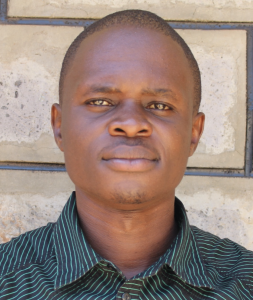Kima Primary School was established in 1938 and the population has grown slow and steady each passing year. They also have a morning program for early childhood education, giving them a total of 700 students throughout the school.
We spoke with Henry Kibisu about what a normal school day looks like.
"I wake up at 5:30 am to prepare for my day's learning program. I take a bath, have my breakfast, then leave for school at 6:30 am to arrive by 7 am. [School] begins at 7:50 am with pupils together with our beloved teachers assembling together to begin the day with a word of prayer and short briefings from the headteacher and the teacher on duty. Normal classes commence from 8 am with short breaks in between, going to about 3:10 pm. We break for games until about 4 pm," shared Henry.
He and his peers attend classes such as mathematics, English, Kiswahili, science, social studies, and religion.
However, the daily schedule becomes a challenge because the school does not have enough water.
"We are indeed in a state of dilemma," said Headteacher Lukongo.
He continued to share more:
We have a shortage of clean, safe water for our general use at school. We have tried reaching the ministry of water but we have not received positive results. The response has always been all about congestion and illegal connections by some of the members of the village. With the high numbers in school, this is affecting the performance of the students - considering we are a giant in this area. As you know, the lack of water usually leads to time wastage, absenteeism, headache, and so on. For the past two years, we have had the challenge of water in our school which forced us to install a 2,500-liter plastic tank to help tap rainwater which is normally used to prepare only meals.
Since the plastic tank cannot hold much water for general use by the institution, the administration has been forced to request pupils to carry water to school from their homes. Piped water can be down for days at a time (it was off on the day of our visit), so students have to come with water both in the mornings and after lunch breaks.
The school is also in bad shape when it comes to sanitation facilities. There are eight latrines for the 369 girls, but four of the pits are uncomfortably full. The 331 boys have six latrines.
"We have a challenge with the sanitation facilities and this is allowing the pupils to waste time at the toilets due to congestion," said Deputy Headteacher Mwaka.
What we can do:
Training
Training on good hygiene habits will be held for two days. The facilitator will use PHAST (participatory hygiene and sanitation transformation), ABCD (asset-based community development), CTC (child to child), lectures, group discussions, and handouts to teach health topics and ways to promote good practices within the school. The CTC method will prepare students to lead other students into healthy habits, as well as kickstart a CTC club for the school.
Handwashing Stations
This CTC club will oversee the new facilities, such as handwashing stations, and make sure they are kept clean and in working condition. The two handwashing stations will be delivered to the school, and the club will fill them with water on a daily basis and make sure there is always a cleaning agent such as soap or ash.
VIP Latrines
Two triple-door latrines will be constructed with local materials that the school will help gather. Three doors will serve the girls while the other three serve the boys. And with a new source of water on school grounds, students and staff should have enough to keep these new latrines clean.
Rainwater Catchment Tank
A 50,000-liter rainwater catchment tank will help alleviate the water crisis at this school. The school will also help gather the needed materials such as sand, rocks, and water for mixing cement. Once finished, this tank can begin catching rainfall that will be used by the school’s students and staff.
This being a rainy region, a rainwater catchment tank is a perfect solution to provide water when the rationed piped water system is not working. Students will no longer carry heavy containers of water from unknown sources.
We and the school strongly believe that with this assistance, standards will significantly improve. These higher standards will translate to better academic performance!

 Rainwater Catchment
Rainwater Catchment
 Rehabilitation Project
Rehabilitation Project
































